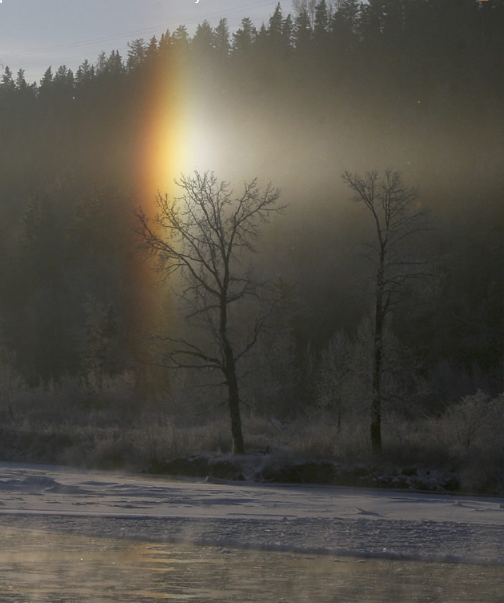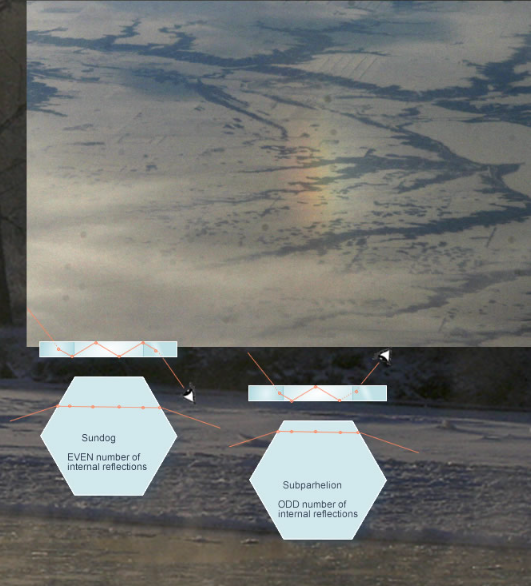Bizarre Star
The Bizarre Star Phenomenon: Exploring the Fascinating World of Atmospheric Optics
Have you ever gazed up at the sky and witnessed a peculiar star-like object that seemed out of place? If so, you may have encountered a "bizarre star" phenomenon, a captivating atmospheric optics display that leaves observers in awe. In this article, we will delve into the intricacies of this optical phenomenon, shedding light on its formation, characteristics, and the factors that contribute to its occurrence.
Understanding Sundogs and Sub-Parhelia
The bizarre star phenomenon encompasses two distinct optical phenomena known as sundogs and sub-parhelia. Sundogs, also referred to as parhelia, materialize in extremely cold weather conditions when diamond dust crystals grow from nearby moisture sources, such as rivers or lakes. These crystals act as prisms, bending and refracting sunlight to create a vibrant display of colorful spots on either side of the sun.
On the other hand, sub-parhelia are the lesser-known counterparts of sundogs. They occur when thin layers of ice crystals in the atmosphere reflect sunlight in a peculiar manner, resulting in the appearance of a "subsun" or a false sun beneath the horizon. These sub-parhelia often exhibit intriguing lower tangent arcs and sub-sun dogs, adding to the enigmatic nature of this phenomenon.
Unraveling the Formation of Sundogs and Sub-Parhelia
To comprehend the formation of sundogs and sub-parhelia, we must delve into the intricate workings of light refraction and reflection within ice crystals. Sundogs are primarily formed by rays of sunlight passing through plate-like ice crystals inclined at an angle of 60 degrees to one another. When the sun is near the horizon, most rays pass straight across the crystal. However, as the sun ascends higher in the sky, an increasing number of rays reflect internally between the large upper and lower faces of the crystal.
- Sundogs are created by rays that reflect an even number of times (or not at all).
- Sub-parhelia, on the other hand, are formed by rays that reflect an odd number of times.
The Role of Ice Crystals in Optical Phenomena
Ice crystals play a pivotal role in the formation of both sundogs and sub-parhelia. These tiny, hexagonal-shaped crystals act as miniature prisms, refracting and reflecting sunlight to produce the mesmerizing displays we observe in the sky. The size and shape of the crystals, as well as their orientation within the atmosphere, contribute to the unique characteristics exhibited by sundogs and sub-parhelia.
- Sundogs are typically caused by plate crystals, while sub-parhelia may involve other crystal shapes.
- The presence of moisture sources, such as rivers or lakes, can facilitate the growth of ice crystals and enhance the likelihood of witnessing these atmospheric optics phenomena.
Exploring the Characteristics of Bizarre Stars
Bizarre stars, comprising both sundogs and sub-parhelia, possess distinct characteristics that set them apart from other optical phenomena. Here are some notable features:
- Sundogs appear as bright spots on either side of the sun, often exhibiting vibrant colors such as red, orange, and yellow.
- Sub-parhelia manifest as false suns below the horizon, creating a mystifying illusion that captivates onlookers.
- Both phenomena can be observed for extended periods, sometimes lasting several hours, although they may be intermittent in nature.
Factors Influencing the Occurrence of Bizarre Stars
The occurrence of sundogs and sub-parhelia is influenced by various atmospheric conditions and factors. Some key elements that contribute to the formation and visibility of these optical phenomena include:
- Extremely cold weather conditions, which facilitate the growth of ice crystals.
- The presence of moisture sources, such as rivers or lakes, that provide the necessary moisture for crystal formation.
- The angle of the sun in relation to the horizon, with sundogs being more prominent when the sun is lower in the sky.
- The abundance and orientation of ice crystals within the atmosphere, which determine the intensity and visibility of sundogs and sub-parhelia.
Captivating Displays of Atmospheric Optics
The bizarre star phenomenon, encompassing sundogs and sub-parhelia, showcases the captivating nature of atmospheric optics. These ethereal displays of light and color serve as a reminder of the intricate workings of our atmosphere and the beauty that can arise from natural phenomena. Whether you're a seasoned sky-watcher or a casual observer, witnessing a bizarre star is an experience that sparks wonder and curiosity.
So, the next time you find yourself gazing up at the sky on a cold winter day, keep an eye out for these mesmerizing optical phenomena. You never know when a bizarre star might grace the heavens, offering a glimpse into the enchanting world of atmospheric optics.

22° Plate Halos by Alan Clark of the University of Calgary, Alberta, Canada. ©Alan Clark, shown with permission.
At top is a sundog, a parhelion, formed in very cold weather by diamond dust crystals. The crystals grew from moisture from the nearby Bow River, Calgary.
The lower image is a 'sub-parhelion' pictured over winter prairie river terrain. "While flying from eastern Canada to Calgary on Jan 1, a thin layer of ice crystals produced a subsun for at least 2 hours, sometimes intermittent, but with intriguing signs of lower tangent arcs and often sub-sun dogs .subparhelia.."
The two halos are related.
Sundogs are formed by rays passing between the side faces of plate crystals inclined 60� to one another. When the sun is near the horizon most rays pass straight across the crystal. As the sun climbs more and more rays reflect internally between the large upper and lower faces.
Rays reflected an EVEN number of times (or not at all) form a sundog.
Rays reflected an ODD number of times form a below-horizon sub-parhelion.

Note: this article has been automatically converted from the old site and may not appear as intended. You can find the original article here.
Reference Atmospheric Optics
If you use any of the definitions, information, or data presented on Atmospheric Optics, please copy the link or reference below to properly credit us as the reference source. Thank you!
-
<a href="https://atoptics.co.uk/blog/bizarre-star/">Bizarre Star</a>
-
"Bizarre Star". Atmospheric Optics. Accessed on April 25, 2024. https://atoptics.co.uk/blog/bizarre-star/.
-
"Bizarre Star". Atmospheric Optics, https://atoptics.co.uk/blog/bizarre-star/. Accessed 25 April, 2024
-
Bizarre Star. Atmospheric Optics. Retrieved from https://atoptics.co.uk/blog/bizarre-star/.